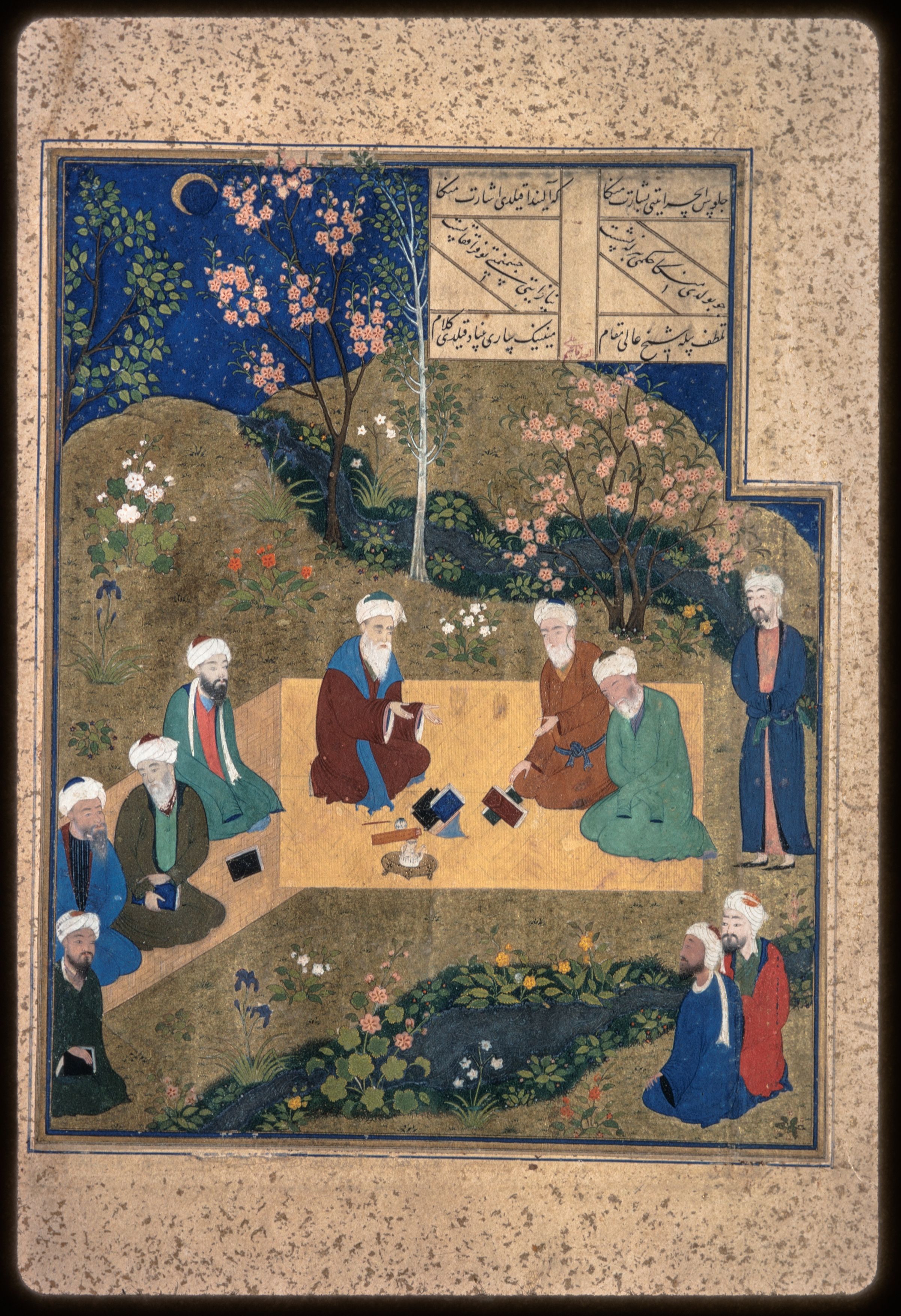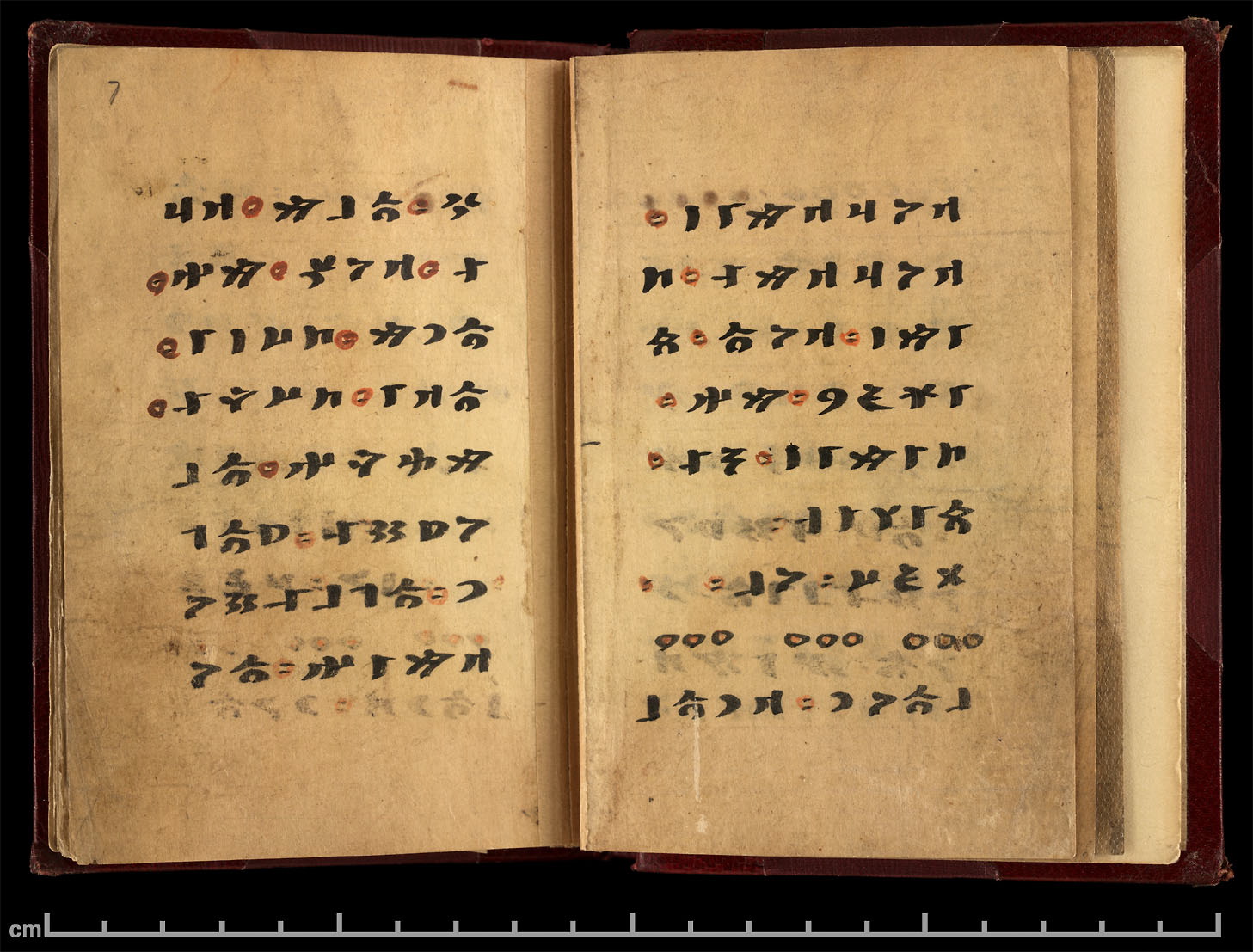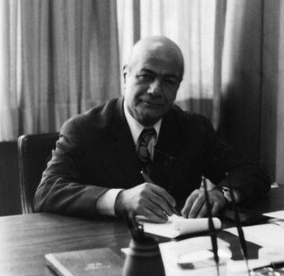|
Dawlatshah Samarqandi
Dawlatshah Samarqandi ( fa, دولتشاه سمرقندی; – 1495/1507) was a poet and biographer active under the Timurid Empire. He is principally known for composing the ''Tadhkirat al-shu'ara'' ("Memorial of poets"), a Persian biographical dictionary of 152 poets, considered highly important for its information about the cultural and political history of Iran and Transoxania under Timurid rule. Life A member of the elite of the Timurid Empire, Dawlatshah was born in 1438. He was the son of Amir Ala al-Dawla Bukhtishah, who served under the Timurid ruler Shah Rukh (). Dawlatshah was the cousin of Amir Firuzshah (died 1444), whose family had received the governorship of Isfahan following the death of the Timurid prince Rustam Mirza in 1423–1425. He had a brother named Amir Radi al-Din Ali, who served under the Timurid prince Abul-Qasim Babur Mirza and composed poems in Persian and Chagatai Turkic. Dawlatshah also wrote poetry and was occasionally a companion of Sult ... [...More Info...] [...Related Items...] OR: [Wikipedia] [Google] [Baidu] |
Timurid Empire
The Timurid Empire ( chg, , fa, ), self-designated as Gurkani ( Chagatai: کورگن, ''Küregen''; fa, , ''Gūrkāniyān''), was a PersianateB.F. Manz, ''"Tīmūr Lang"'', in Encyclopaedia of Islam, Online Edition, 2006 Turco-Mongol empire that dominated Greater Iran in the early 15th century, comprising modern-day Iran, Iraq, Afghanistan, much of Central Asia, the South Caucasus, as well as most of contemporary Pakistan and parts of contemporary North India and Turkey. The empire was founded by Timur (also known as Tamerlane), a warlord of Turco-Mongol lineage, who established the empire between 1370 and his death in 1405. He envisioned himself as the great restorer of the Mongol Empire of Genghis Khan, regarded himself as Genghis's heir, and associated much with the Borjigin. Timur continued vigorous trade relations with Ming China and the Golden Horde, with Chinese diplomats like Ma Huan and Chen Cheng regularly traveling west to Samarkand to buy and sell goods. T ... [...More Info...] [...Related Items...] OR: [Wikipedia] [Google] [Baidu] |
Ali-Shir Nava'i
'Ali-Shir Nava'i (9 February 1441 – 3 January 1501), also known as Nizām-al-Din ʿAli-Shir Herawī ( Chagatai: نظام الدین علی شیر نوایی, fa, نظامالدین علیشیر نوایی) was a Timurid poet, writer, statesman, linguist, Hanafi Maturidi mystic and painter who was the greatest representative of Chagatai literature. Nava'i believed that his native Chagatai Turkic language was superior to Persian for literary purposes, an uncommon view at the time and defended this belief in his work titled '' Muhakamat al-Lughatayn'' (''The Comparison of the Two Languages''). He emphasized his belief in the richness, precision and malleability of Turkic vocabulary as opposed to Persian. Because of his distinguished Chagatai language poetry, Nava'i is considered by many throughout the Turkic-speaking world to be the founder of early Turkic literature. Many places and institutions in Central Asia are named after him. Life Alisher Nava'i was born ... [...More Info...] [...Related Items...] OR: [Wikipedia] [Google] [Baidu] |
Istanbul
Istanbul ( , ; tr, İstanbul ), formerly known as Constantinople ( grc-gre, Κωνσταντινούπολις; la, Constantinopolis), is the List of largest cities and towns in Turkey, largest city in Turkey, serving as the country's economic, cultural and historic hub. The city straddles the Bosporus strait, lying in both Europe and Asia, and has a population of over 15 million residents, comprising 19% of the population of Turkey. Istanbul is the list of European cities by population within city limits, most populous European city, and the world's List of largest cities, 15th-largest city. The city was founded as Byzantium ( grc-gre, Βυζάντιον, ) in the 7th century BCE by Ancient Greece, Greek settlers from Megara. In 330 CE, the Roman emperor Constantine the Great made it his imperial capital, renaming it first as New Rome ( grc-gre, Νέα Ῥώμη, ; la, Nova Roma) and then as Constantinople () after himself. The city grew in size and influence, eventually becom ... [...More Info...] [...Related Items...] OR: [Wikipedia] [Google] [Baidu] |
Modern Turkish
Turkish ( , ), also referred to as Turkish of Turkey (''Türkiye Türkçesi''), is the most widely spoken of the Turkic languages, with around 80 to 90 million speakers. It is the national language of Turkey and Northern Cyprus. Significant smaller groups of Turkish speakers also exist in Iraq, Syria, Germany, Austria, Bulgaria, North Macedonia, Greece, the Caucasus, and other parts of Europe and Central Asia. Cyprus has requested the European Union to add Turkish as an official language, even though Turkey is not a member state. Turkish is the 13th most spoken language in the world. To the west, the influence of Ottoman Turkish—the variety of the Turkish language that was used as the administrative and literary language of the Ottoman Empire—spread as the Ottoman Empire expanded. In 1928, as one of Atatürk's Reforms in the early years of the Republic of Turkey, the Ottoman Turkish alphabet was replaced with a Latin alphabet. The distinctive characteristics of the Turkis ... [...More Info...] [...Related Items...] OR: [Wikipedia] [Google] [Baidu] |
Ottoman Turkish
Ottoman Turkish ( ota, لِسانِ عُثمانى, Lisân-ı Osmânî, ; tr, Osmanlı Türkçesi) was the standardized register of the Turkish language used by the citizens of the Ottoman Empire (14th to 20th centuries CE). It borrowed extensively, in all aspects, from Arabic and Persian, and its speakers used the Ottoman Turkish alphabet for written communication. During the peak of Ottoman power (), words of foreign origin in Turkish literature in the Ottoman Empire heavily outnumbered native Turkish words, with Arabic and Persian vocabulary accounting for up to 88% of the Ottoman vocabulary in some texts.''Persian Historiography & Geography''Pustaka Nasional Pte Ltd p 69 Consequently, Ottoman Turkish was largely unintelligible to the less-educated lower-class and to rural Turks, who continued to use ("raw/vulgar Turkish"; compare Vulgar Latin and Demotic Greek), which used far fewer foreign loanwords and is the basis of the modern standard. The Tanzimât era (1839– ... [...More Info...] [...Related Items...] OR: [Wikipedia] [Google] [Baidu] |
Shiraz
Shiraz (; fa, شیراز, Širâz ) is the fifth-most-populous city of Iran and the capital of Fars Province, which has been historically known as Pars () and Persis. As of the 2016 national census, the population of the city was 1,565,572 people, and its built-up area with Sadra was home to almost 1,800,000 inhabitants. A census in 2021 showed an increase in the city's population to 1,995,500 people. Shiraz is located in southwestern Iran on the () seasonal river. Founded in the early Islamic period, the city has a moderate climate and has been a regional trade center for over a thousand years. The earliest reference to the city, as ''Tiraziš'', is on Elamite clay tablets dated to 2000 BCE. The modern city was restored or founded by the Arab Umayyad Caliphate in 693 CE and grew prominent under the successive Iranian Saffarid and Buyid dynasties in the 9th and 10th–11th centuries, respectively. In the 13th century, Shiraz became a leading center of the arts and le ... [...More Info...] [...Related Items...] OR: [Wikipedia] [Google] [Baidu] |
Zabihollah Safa
Zabihollah Safa ( fa, ذبیحاللّه صفا; May 7, 1911 in Shahmirzad, Iran – April 29, 1999 in Lübeck, Germany) was a scholar and professor Emeritus of Iranian Studies at the University of Tehran. His main contribution to the field of Iranian studies is seen in his seminal and comprehensive works on the history of Persian literature. He was also a regular contributor to the ''Encyclopaedia Iranica''. Education and professional life Awards Z. Safa has won several awards: a.o. Decoration (medal) for Science (1. class) (Cultural Ministry (1936), ''Nešān-e Sepās'', 1. class (1947), ''Palmes Académiques'' Rang Commandeur (French Government) (1970), ''Neshān-e Tāj'' (1977), ''Ehsan Yarshater'' prize (1997) Bibliography Persian literature * ''Hamâse-sarâyi dar Irân'', Tehran 1945 (2000) * ''Târikh-e tahawwol-e Nazm-o- Nasr-e Pârsi'', 1952 (1331), 8. ed. 1974 (1353), * ''Ayên-e sokhan. Dar ma’âni wa bayân'', Tehran 1952 (1959), 18. ed. 1994 * ''T ... [...More Info...] [...Related Items...] OR: [Wikipedia] [Google] [Baidu] |
Hamdallah Mustawfi
Hamdallah Mustawfi Qazvini ( fa, حمدالله مستوفى قزوینی, Ḥamdallāh Mustawfī Qazvīnī; 1281 – after 1339/40) was a Persian official, historian, geographer and poet. He lived during the last era of the Mongol Ilkhanate, and the interregnum that followed. A native of Qazvin, Mustawfi belonged to family of ''mustawfis'' (financial accountants), thus his name. He was a close associate of the prominent vizier and historian Rashid al-Din Hamadani, who inspired him to write historical and geographical works. Mustawfi is the author of three works; '' Tarikh-i guzida'' ("Excerpt History"), '' Zafarnamah'' ("Book of Victory") and '' Nuzhat al-Qulub'' ("Hearts' Bliss"), respectively. A highly influential figure, Mustawfi's way of conceptualizing the history and geography of Iran has been emulated by other historians since the 13th-century. He is buried in a dome-shaped mausoleum in his native Qazvin. Biography Mustawfi was born in 1281 in the town of Qazvin, ... [...More Info...] [...Related Items...] OR: [Wikipedia] [Google] [Baidu] |
Tarikh-i Guzida
The ''Tarikh-i guzida'' (also spelled ''Tarikh-e Gozideh'' ( fa, تاریخ گزیده, "Excerpt history"), is a compendium of Islamic history from the creation of the world until 1329, written by Hamdallah Mustawfi and finished in 1330.''E.J. Brill's first Encyclopedia of Islam, 1913-1936'', ed. M. Th. Houtsma, (BRILL, 1993), 845. It was written in a dry simple style and dedicated to Ghiyath al-Din Muhammad. Content The ''Tarikh-i guzida'' contains the history of the Islamic world, from the creation of the world up to 1329(729 AH). The introduction includes the creation of the world followed by six sections; # The prophets # Persian Kings before Muhammad # Muhammad and caliphs # Persia and other lands ruled by Muslim dynasties # Poets and scholars # Region and history of Kazwin(Qazvin) Also mentioned is the Mongol invasion. Qazvini produced a world map in the ''Tarikh-i guzida'' which contained meridians. Qazvini declared the Afghans to be Israelites. Modern era The ''Tarikh-i g ... [...More Info...] [...Related Items...] OR: [Wikipedia] [Google] [Baidu] |
Rashid Al-Din Vatvat
Rashid al-Din Muhammad ibn Muhammad ibn Abd Jalil al-Umari ( fa, رشیدالدین محمد بن محمد بن عبد جلیل العمری; 1088/9 – 1182/3), better known by his nickname of Vatvat (; "the swallow"), was a Persian secretary, poet, philologist in the Khwarazmian Empire. In addition to being a prolific author in Arabic and Persian, he also occupied high-ranking offices, serving as the chief secretary and propagandist under the Khwarazmshahs Atsiz () and Il-Arslan (). Although Vatvat spent most of his life at the Khwarazmian capital of Gurganj, he was himself a native of Balkh or Bukhara. He mainly composed panegyric ''qasidehs'', but his rhetorical work ''Hadā'iq al-sihr fi daqa'iq al-shi'r'' ("Magic Gardens of the Niceties of Poetry") is in prose. Biography Vatvat was born in 1088/9 in either the city of Balkh or Bukhara, to a Sunni Persian family, which claimed descent from the second Caliph Omar (). Vatvat was educated at a Nizamiya ''madrasa'' in Balkh, w ... [...More Info...] [...Related Items...] OR: [Wikipedia] [Google] [Baidu] |
Nizami Aruzi
Ahmad ibn Umar ibn Alī, known as Nizamī-i Arūzī-i Samarqandī ( fa, نظامی عروضی) and also Arudi ("The Prosodist"), was a Persian poet and prose writer who flourished between 1110 and 1161. He is particularly famous for his ''Chahar Maqala'' ("Four Discourses"), his only work to fully survive. While living in Samarqand, Abu’l-Rajaʾ Ahmad b. ʿAbd-Al-Ṣamad, a ''dehqan'' in Transoxiana, told Nezami of how the poet Rudaki was given compensation for his poem extolling the virtues of Samanid ''Amir'' Nasr b. Ahmad. Life A native of Samarqand in Transoxiana, his date of birth and death is uncertain. He was most likely born at the end of the 11th century. What is little known of his life can only be found in his book ''Chahar Maqala''. He spent most of his time in Khorasan and Transoxiana, and served as a court-poet to the Ghurids for 45 years. In 1110/1, he was at Samarqand, where he gathered material about the Persian poet Rudaki (d. 941). In 1112/3, he met Omar Kh ... [...More Info...] [...Related Items...] OR: [Wikipedia] [Google] [Baidu] |
Ubayd Zakani
Khwajeh Nizam al-Din Ubayd Allah al-Zakani ( fa, خواجه نظام الدین عبید الله الزاکانی, Ḵwājeh Niẓām al-Dīn ʿUbayd Allāh al-Zākānī; d. 1370), better known as Ubayd Zakani () was a Persian poet of the Mongol era, regarded as one of the best satirists in Persian literature. His most famous work is ''Mush-o Gorbeh'' ("Mouse and Cat"), a political satire, which attacks religious hypocrisy. Although a highly popular figure, Ubayd's work has received little attention until recently, due to provoking and bawdy texts in the majority of his works. He has been compared to the French Enlightenment writer Voltaire (d. 1778). Background Ubayd was from the Zakani family, which was descended from the Banu Khafaja, an Arab tribe that had immigrated to Qazvin in northern Iran at the start of the Islamic era. The Zakani family was made up of two branches; one being notable for its field in religion, whilst the other consisted of landowners and bureaucrats, t ... [...More Info...] [...Related Items...] OR: [Wikipedia] [Google] [Baidu] |




